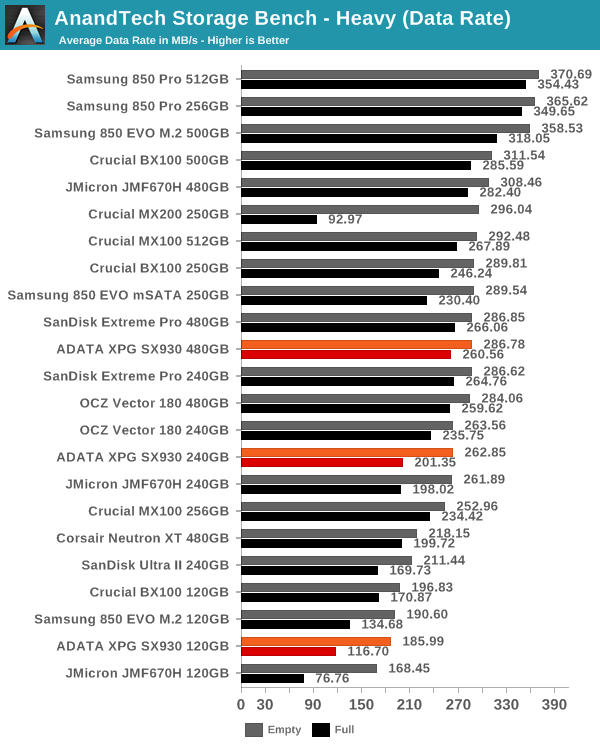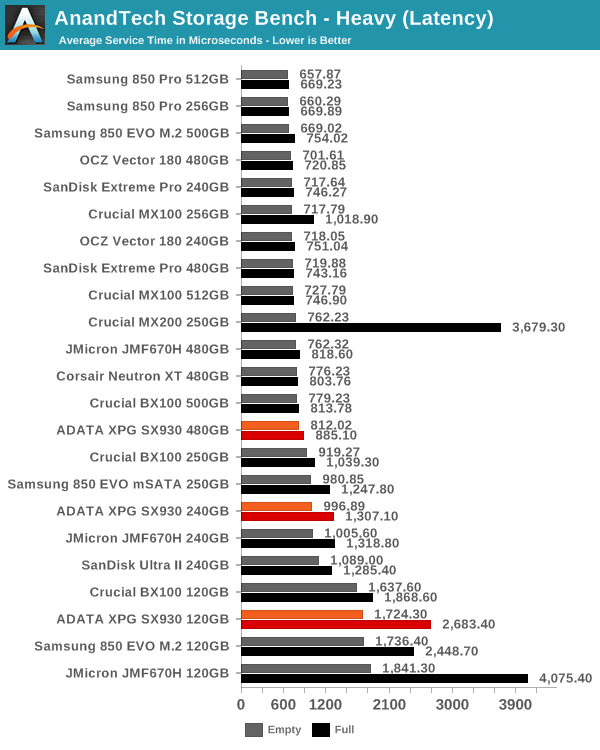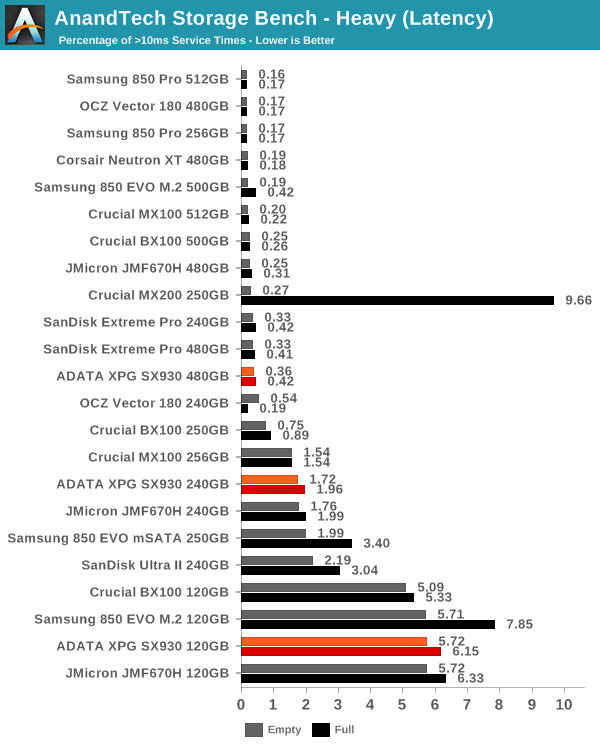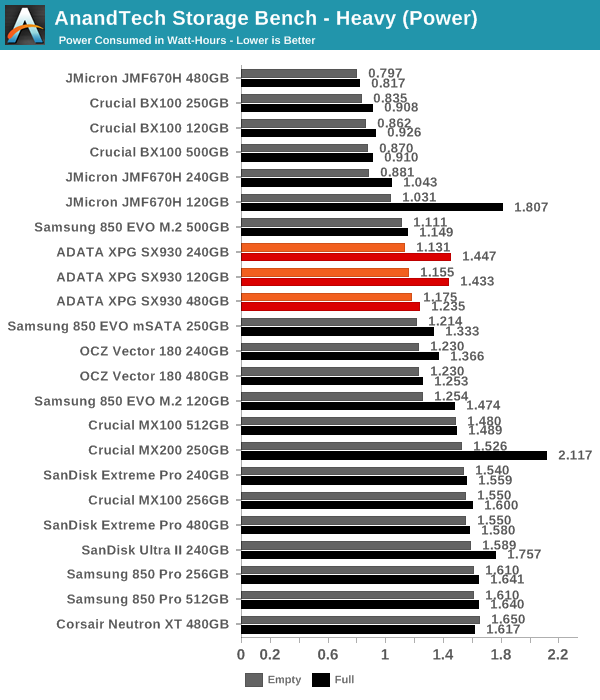ADATA XPG SX930 (120GB, 240GB & 480GB) SSD Review: JMicron JMF670H Debuts
by Kristian Vättö on July 16, 2015 10:00 AM ESTAnandTech Storage Bench - Heavy
While The Destroyer focuses on sustained and worst-case performance by hammering the drive with nearly 1TB worth of writes, the Heavy trace provides a more typical enthusiast and power user workload. By writing less to the drive, the Heavy trace doesn't drive the SSD into steady-state and thus the trace gives us a good idea of peak performance combined with some basic garbage collection routines. For full details of the test, please refer to the this article.

In our Heavy trace the SX930 is an average performer. To be frank, the JMF670H doesn't seem to have enough juice to go head to head with the 850 EVO and BX100, which is a shame because it leaves price as the only competitive advantage ADATA can have.

Surprisingly the 240GB model experiences more >10ms IOs in our Heavy trace than in The Destroyer. I would speculate this is due to the SLC cache filling up because the Heavy trace is more peak IO focused, whereas The Destroyer is built more for sustained performance, so it may be that in The Destroyer the controller just bypasses the SLC cache at some point and writes directly to MLC. In any case, optimizations are certainly needed to improve performance.

Power consumption, on the other hand, is relatively good. It's not BX100-level, but compared to some other high-end SSDs the SX930 has a more efficient power profile.











67 Comments
View All Comments
MrSpadge - Thursday, July 16, 2015 - link
Kristian.. that's so shocking to hear! It's the same attitude which gave us the poorly performing JMicron controllers in the first years of SSDs. Was it 2009? It took Anand to explain them why their drives optimized for sequential performance s*cked in the real world. Did they learn nothing during all those years?zodiacfml - Saturday, July 18, 2015 - link
True yet both has a point. Even if they optimized for low queue depths, real world client workloads wouldn't change much such as booting Windows or loading some games or programs though benchmarks would show the improvements. I would like to see better random performance in all SSDs in the future but it's rare to have that kind of workload in clients and usually it is done so quickly.They listened though because Anandtech is already respected when it comes to these.
bug77 - Friday, July 17, 2015 - link
But can you really blame them? Even Anandtech runs the standard benchmark battery and throws you some number. They don't test real-world scenarios, so why would manufacturers optimize for that?leexgx - Friday, July 17, 2015 - link
maybe you should be looking at the AnandTech Storage Bench part of the reviewsZeDestructor - Thursday, July 16, 2015 - link
No Intel 730/S3500 in the comparisons? :(frenchy_2001 - Thursday, July 16, 2015 - link
Completely different market segment (medium SATA SSD vs premium PCIe/NVMe).You can still compare them with BENCH if you want to see what you get for your $$
(hint: lots if you need it, little in client usage)
DigitalFreak - Friday, July 17, 2015 - link
So JMicron is still crap after all these years. At least they're consistent.Oxford Guy - Saturday, July 18, 2015 - link
Not everyone can have a drive that slows down to 30 MB/s on reads like Samsung.The_Assimilator - Sunday, July 19, 2015 - link
Samsung has made 1 slip-up that was fixed with a firmware update, JMicron makes controllers that are consistently awful. Which one deserves more of your vitriol?DigitalFreak - Sunday, July 19, 2015 - link
He's mesmerized by the flames on the box.